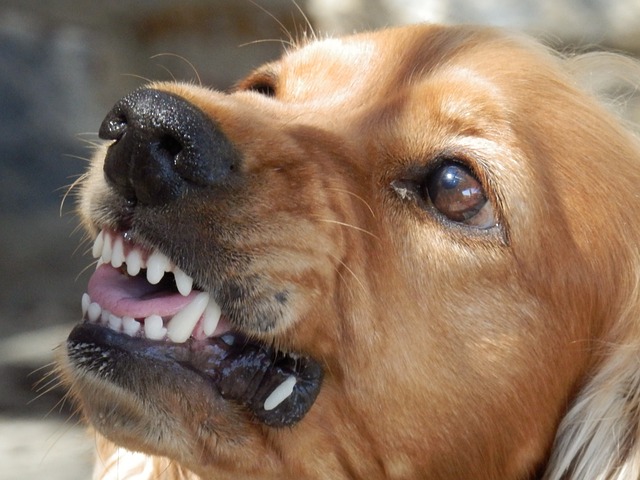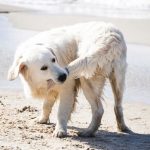+91 8073387610

Aggression in dogs can be a concerning and challenging behavior for dog owners. It’s essential to recognize that aggression is a complex issue with various underlying causes.
Understanding the reasons behind a dog’s aggressive behavior is crucial in addressing and managing it effectively.
In this article, we will explore the common causes of aggression in dogs and provide guidance on how to address each category.
#1: Fear and Anxiety-Related Aggression
Cause: Fear and anxiety are significant contributors to aggression in dogs. When a dog feels threatened or scared, they may resort to aggression as a defense mechanism.
Addressing Fear and Anxiety-Related Aggression:
- Positive Reinforcement Training: Use positive reinforcement methods to build your dog’s confidence and trust. Reward desirable behaviors with treats, praise, and affection to create a positive association with specific situations.
- Desensitization and Counter-Conditioning: Gradually expose your dog to the situations that trigger their fear or anxiety in a controlled and safe manner. Pair these exposures with positive experiences to change their emotional response over time.
- Provide a Safe Space: Create a safe and quiet space where your dog can retreat when feeling stressed or overwhelmed. This will give them a sense of security and help prevent aggressive reactions.
#2: Resource Guarding Aggression
Cause: Dogs may display aggression when they feel the need to protect their valued resources, such as food, toys, or resting areas.
Addressing Resource Guarding Aggression:
- Avoid Punishment: Punishing a dog for resource guarding can worsen the behavior and escalate aggression. Instead, use positive reinforcement training to teach them to associate people approaching their resources with something positive.
- Trading Up: Teach your dog the “trading up” technique, where they voluntarily exchange their valued resource for something even better. This helps them understand that giving up a resource doesn’t mean losing it permanently.
- Respect Personal Space: Teach family members and visitors to respect the dog’s personal space when they are eating or enjoying their possessions.
#3: Territorial Aggression
Cause: Territorial aggression arises when a dog perceives a threat to their territory, which can include the home or yard.
Addressing Territorial Aggression:
- Controlled Introductions: When introducing your dog to new people or animals in their territory, do it in a controlled and gradual manner to reduce stress and potential aggression.
- Socialization: Early and proper socialization can help reduce territorial tendencies in dogs. Expose them to various people, animals, and environments to build their confidence and adaptability.
- Secure the Environment: Ensure your property is properly fenced and secure to prevent confrontations with passersby or other animals.
#4: Frustration-Induced Aggression
Cause: Frustration can lead to aggressive outbursts in dogs when they are unable to access or achieve something they desire.
Addressing Frustration-Induced Aggression:
- Provide Mental and Physical Stimulation: Engage your dog in regular physical exercise and mental enrichment activities to prevent boredom and frustration.
- Teach Patience: Incorporate patience and impulse control training to help your dog learn to wait for rewards and avoid impulsive reactions.
#5: Redirected Aggression
Cause: Redirected aggression occurs when a dog is aroused or agitated by one stimulus but directs their aggression towards another person or animal.
Addressing Redirected Aggression:
- Avoid Triggers: If you know certain situations can lead to redirected aggression, take steps to avoid those triggers.
- Separation and Calmness: If your dog becomes overly aroused, calmly remove them from the situation and give them time to calm down before reintroducing them to the trigger.
#6: Pain-Induced Aggression
Cause: Dogs in pain or discomfort may exhibit aggression as a defensive response.
Addressing Pain-Induced Aggression:
- Medical Evaluation: If your dog’s behavior changes suddenly or unexpectedly, consult a veterinarian to rule out any underlying medical issues that could be causing pain or discomfort.
- Handle with Care: Be gentle and cautious when handling a dog you suspect is in pain. Avoid sudden movements or actions that may exacerbate their discomfort.
#7: Lack of Socialization
Cause: Poor socialization during the critical developmental stages can lead to fear and insecurity in dogs, resulting in aggression.
Addressing Lack of Socialization:
- Early Socialization: Expose your puppy to a wide range of people, animals, and environments during their early months to help them become well-adjusted and confident adults.
- Positive Experiences: Ensure that all socialization experiences are positive and free from trauma or negative associations.
#8: Hormonal or Genetic Factors
Cause: In some cases, aggressive behavior may have a genetic or hormonal basis, particularly in intact (unspayed or unneutered) dogs.
Addressing Hormonal or Genetic Factors:
- Spaying or Neutering: If the aggression is hormonally influenced, spaying or neutering your dog can sometimes help reduce aggressive tendencies.
- Professional Behavior Modification: Seek the help of a professional dog trainer or behaviorist who can create a tailored behavior modification plan for your dog’s specific needs.
Conclusion
Addressing aggression in dogs requires patience, consistency, and understanding. Identifying the underlying causes and using positive reinforcement training methods can significantly improve a dog’s behavior.
However, it is essential to remember that managing aggression can be a gradual process, and seeking the guidance of a qualified professional may be necessary in some cases.
Always prioritize the safety of your dog, your family, and those around you when working to address aggressive behavior.
With the right approach, dedication, and love, many dogs can overcome their aggressive tendencies and become well-adjusted and happy companions








